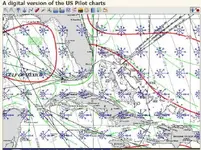SADS 669
Bronze Member
- Joined
- Jan 20, 2013
- Messages
- 2,454
- Reaction score
- 3,742
- Golden Thread
- 0
- Location
- Long Island, Bahamas
- Detector(s) used
- Tesoro Sand Shark....Aqua pulse 1B....Equinox ll
- Primary Interest:
- Shipwrecks
- #1
Thread Owner
Anyone out there have an opinion about who, what, and where ships headed through the Crooked Island passage as a way to get from South to North in the old days or did they go East below Crooked island and West below Ragged Island?
Last edited:




